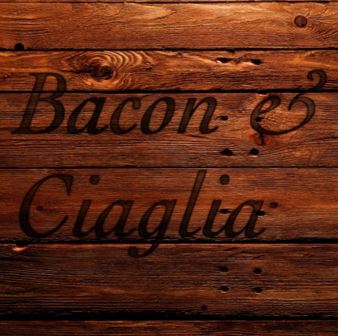 music
music
Greg Bacon and John Ciaglia Collaborating on Music Book…
Back in nineteen-eighty-seven I went to the Westbrook Fife & Drum Muster where I bought my first fife and drum recording. It was a white cassette of the first Ancient Mariner album, which had been released seven years prior. It was one of the few Westbrook Musters where I couldn’t wait for the weekend to end. I desperately wanted to hear what was on that tape, and to do so required making the trek back home where my boom box sat waiting for me in my Massachusetts living room.
The tunes started to roll, White Cockade, Adams and York, and Sailors Hornpipe. I was immediately drawn in. I was then seduced by the singing of Ruben Ranzo and the seamless transition to Clapboard Hill. All of it great and exuberant, but also fully within the boundaries of what I had expected. I had, after all, been watching those barefooted bastions of sea music from the time I was a little boy and attending Sudbury Musters in the mid seventies. Just as side one was coming to a close, however, the boundaries of fifing as I understood them were breached.
Suddenly, from my crappy little speakers, came classical music fused with a complex matrix of fifes spinning around tunes that felt traditional, but not structured like other tunes I had learned. There were too many fifes for me to track and I went into a dizzy trance as the music moved from one tune to the next; a beautiful melodic waltz; a single fife sliding into a slip jig with the others soon in tow; tempo changes; jigs; reels; breaks; ornaments; teases; and something wild on the end that didn’t make any logical sense but seemed like the only way to end. I clawed for the liner notes, praying to God it wasn’t going to have some lame title like Sonata in D. It was… The Sea of Ale and the Dock Street Mermaid. Miraculous!
Hearing The Sea of Ale completely changed my relationship to music. After that I joined the Ancient Mariners. I started writing melodies. I signed up for a music theory class in my high school, even though I had never played in any school band, and the music teacher had no idea who I was. I would also sit for hours in front of a double cassette deck in my home, recording a melody onto one tape, then playing along to that recording while re-record both the playback and my playing onto the other tape. It was a poor mans way of overdubbing and multi-track recording. It sounded like shit. But I learned the basics of writing harmony and developed a lot critical listening skills.
I also discovered, through much of my own trial and error, that those beautiful harmonies on the Sea of Ale must have been created by someone with immense knowledge of classical music theory, and by someone that must have spent years honing the art of penning these beautiful contrapuntal settings. Writing harmony is freaking hard. You may be able to accidentally work your way into a single line harmony of passable merit, but writing something with four voices is akin to a tight rope walk over a canyon while juggling fire and whistling Dixie. The results would be disastrous for mere mortals.
I later learned the juggler and harmonic arranger of Sea of Ale is John Ciaglia. Through the years I got to know ‘Ciaglia’, as his friends call him. I marched in the Mariners with him, played in an occasional quartet, drank wine in the Kasbah, discussed music, and developed a true appreciation for his evolving art. Also, through all these years, I’ve continued to write new melodies.
Then, one day in early 2015, I got an email from Ciaglia out of the thin blue air. He had found a few tunes I had published years ago and wrote arrangements for them. Coincidentally I had just finished writing a new tune, so I sent that along and asked if he’d be interested in writing some parts for it as well. A few days later I received another email with a gorgeous arrangement of my plain little tune. From there a collaboration has ensued that has resulted in a hundred pages of quartets. A hundred pages!!! Me writing the melody, he writing the harmony.
For me it’s been a magical journey that started with first hearing the Sea of Ale, and now consumes me in a sea of writing. In the summer of 2016 we plan to publish these works. Until then, the writing continues and I offer to you this example that I received in my email today; a four voice arrangement of a melody that I wrote a few weeks ago called Cleopatra’s Needles.
I hope you can hear the enjoyment in what we are doing, and in turn find enjoyment in listening.